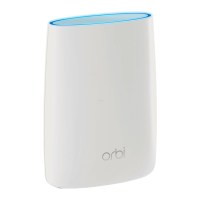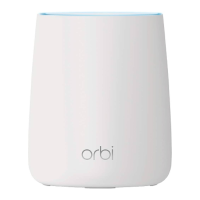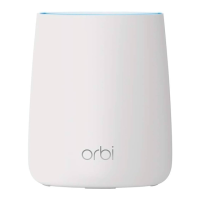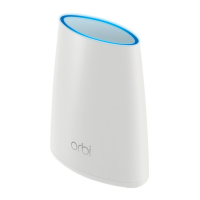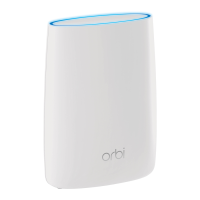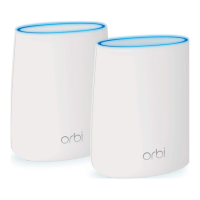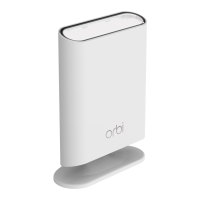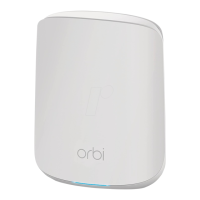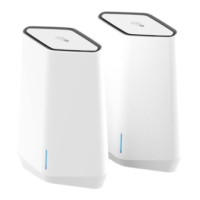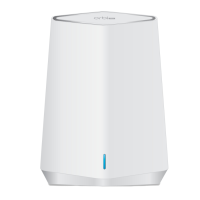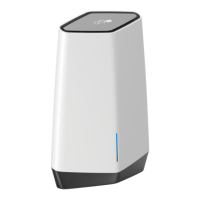Table 6. Technical specifications for the router (Continued)
DescriptionFeature
1.08 lb (491 g)Orbi 4GX Router (LBR2010) weight
0° to 40°C (32º to 104ºF)Operating temperature
90% maximum relative humidity, noncondensingOperating humidity
FCC Part 15 Class B
VCCI Class B
EN 55 022 (CISPR 22), Class B C-Tick N10947
Electromagnetic emissions
4G bands (LTE-FDD): 1, 3, 5, 7, 8, 20, 28
4G bands (LTE-TDD): 38, 40, 41
3G bands: 1, 3, 5, 8
Mobile bands worldwide
4G bands (LTE-FDD): 2, 4, 5, 7, 12, 13, 14, 17, 25, 26, 29, 30, 66, 71
4G bands (LTE-TDD): 41
3G bands: 2, 4, 5
LTE CAT
•
4G band (LTE FDD): B 1, 3, 5, 7, 8, 20, 28
•
4G band (LTT-TDD): B38, 40, 41
•
3G band: B1, 3, 5, 8
Mobile bands Canada
RJ-45: 10BASE-T, 100BASE-TX, or 1000BASE-TLAN
RJ-45: 10BASE-T, 100BASE-TX, or 1000BASE-TWAN
Maximum wireless signal rate complies with the IEEE 802.11 standard.
Note: Maximum wireless signal rate derived from IEEE Standard 802.11
specifications. Actual throughput can vary. Network conditions and
environmental factors, including volume of network traffic, building
materials and construction, and network overhead, lower actual data
throughput rate.
WiFi
2.4 GHz: Maximum 400 Mbps
5 GHz fronthaul: Maximum 866 Mbps
Radio data rates
IEEE 802.11b/g/n 2.4 GHz–256 QAM support
IEEE 802.11 a/n/ac 5 GHz–256 QAM support
Data encoding standards
Limited by the amount of WiFi network traffic generated by each node
(typically 50–70 nodes)
2.4 GHz: 127
5 GHz: 127
Maximum number of computers
per WiFi network
2.412–2.462 GHz (US)
2.412–2.472 GHz (Japan)
2.412–2.472 GHz (Europe ETSI)
2.4 GHz operating frequency range
User Manual169Supplemental Information
Orbi 4GX Router Model LBR1020

